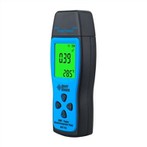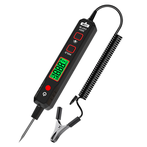Analysis of Industry Applications of Night Vision Devices
1. Building Outline Detection
Nowadays, drug enforcement operations have become increasingly complex, with many illicit plantations shifting from outdoor to indoor settings. This has posed significant challenges for law enforcement in gathering evidence. The application of night vision technology has addressed this problem, as indoor plantations typically use 1-kilowatt halogen lamps to provide the light and heat required for growth. While these lamps heat the interior of the building, heat radiates to the outer surfaces. Thermal imagers can detect this heat emission, revealing the building's outline and assisting police in drug busts.
2. Rescue Missions and Fugitive Search
Low-light vision devices and thermal imagers enable round-the-clock searches for missing persons or fugitives. Humans are strong emitters of thermal radiation, making their positions easily identifiable via thermal imaging. This technology can also detect individuals hiding in covert locations. For example, when two criminals escaped during transportation by the Georgetown Police Department, officers launched an immediate manhunt. One fugitive hid in a thickly vegetated area, and despite three passes with flashlights, police failed to locate him. Using a handheld thermal imager produced by Raytheon, however, they apprehended the fugitive in just 25 seconds.
3. Ensuring Officer Safety
Night vision technology allows officers to spot suspects at night without being detected themselves. In a California case, DEA agents used thermal imagers to monitor a drug-making syndicate operating out of a mountain 据点 (stronghold). The criminals regularly searched for surveillance teams in the woods at night, but the agents, equipped with thermal imagers in the forest, remained undetected, ensuring their safety throughout the operation.
4. Vehicle Tracking
Vehicles emit substantial heat during and after use, with thermal radiation emanating not only from engines but also tires, brakes, and exhaust pipes. Police helicopters equipped with thermal imagers can track suspect vehicles from the air, even when their lights are off. Patrol cars with onboard thermal imagers can also trace vehicles that have recently parked in lots or fled the scene by detecting residual heat from recently shut-off engines.






